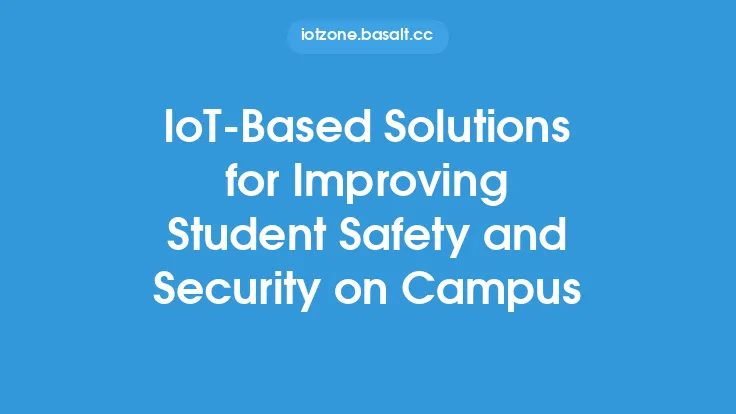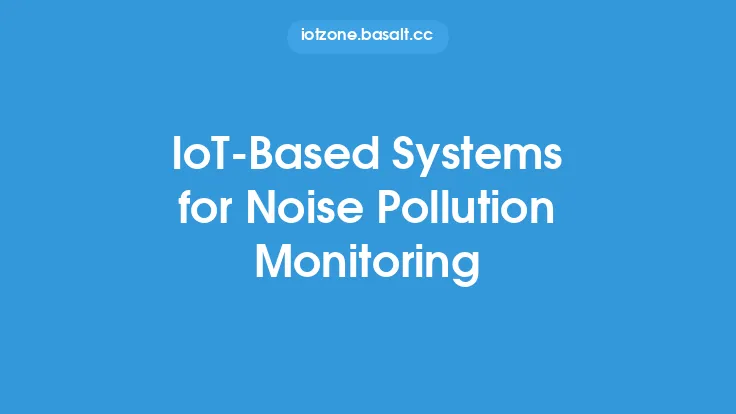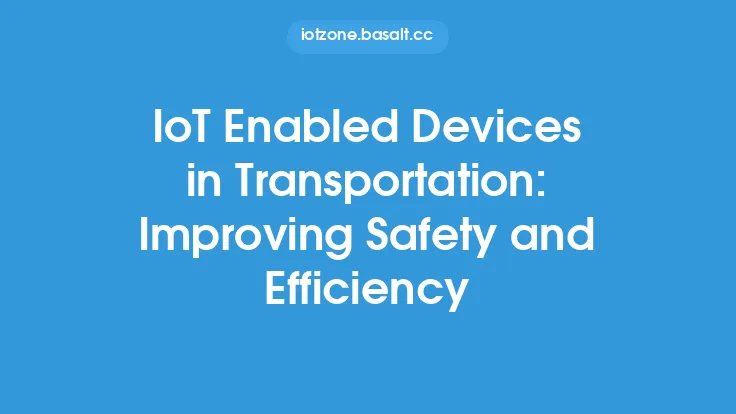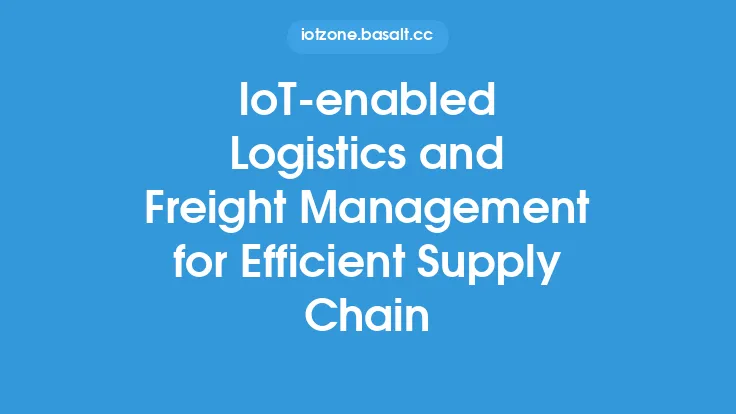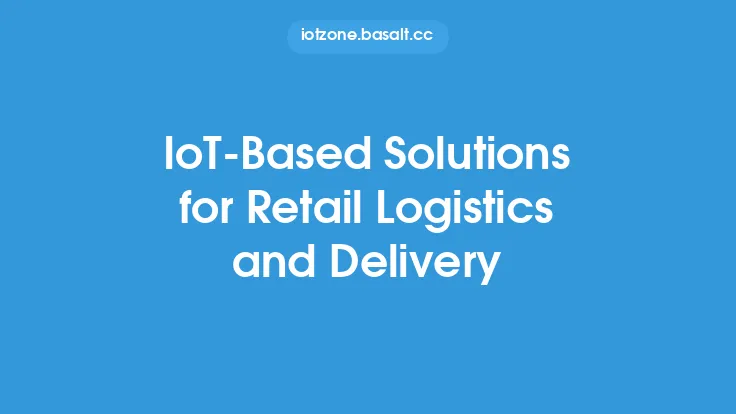The increasing number of vehicles on the road has led to a rise in road accidents, resulting in loss of life and property. To mitigate this issue, it is essential to ensure that vehicles are properly maintained and monitored. The Internet of Things (IoT) technology has emerged as a game-changer in this regard, enabling real-time monitoring and maintenance of vehicles. By leveraging IoT-based vehicle monitoring and maintenance, road safety can be significantly improved.
Introduction to IoT-based Vehicle Monitoring
IoT-based vehicle monitoring involves the use of sensors, GPS, and other technologies to track vehicle performance, location, and other parameters in real-time. This data is then transmitted to a central server or cloud-based platform, where it can be analyzed and used to identify potential issues. The use of IoT-based vehicle monitoring can help identify problems before they become major issues, reducing the risk of accidents and improving overall road safety.
Key Components of IoT-based Vehicle Monitoring
Several key components are involved in IoT-based vehicle monitoring, including:
- Sensors: These are used to track various vehicle parameters such as speed, acceleration, braking, and engine performance.
- GPS: This is used to track the location of the vehicle in real-time.
- Telematics: This involves the use of wireless communication technologies such as cellular or satellite to transmit data from the vehicle to a central server or cloud-based platform.
- Data Analytics: This involves the use of software and algorithms to analyze the data transmitted from the vehicle and identify potential issues.
Benefits of IoT-based Vehicle Monitoring
The use of IoT-based vehicle monitoring offers several benefits, including:
- Improved Road Safety: By identifying potential issues before they become major problems, IoT-based vehicle monitoring can help reduce the risk of accidents and improve overall road safety.
- Reduced Maintenance Costs: By identifying issues early, maintenance costs can be reduced, and vehicle downtime can be minimized.
- Improved Vehicle Performance: IoT-based vehicle monitoring can help optimize vehicle performance, reducing fuel consumption and improving overall efficiency.
- Enhanced Driver Safety: IoT-based vehicle monitoring can help identify driver behavior that may be contributing to safety issues, such as aggressive driving or fatigue.
IoT-based Vehicle Maintenance
IoT-based vehicle maintenance involves the use of IoT technology to predict and prevent vehicle failures. This is achieved through the use of advanced analytics and machine learning algorithms that analyze data from sensors and other sources to identify potential issues. By predicting and preventing vehicle failures, IoT-based vehicle maintenance can help reduce the risk of accidents and improve overall road safety.
Predictive Maintenance
Predictive maintenance is a key aspect of IoT-based vehicle maintenance. This involves the use of advanced analytics and machine learning algorithms to analyze data from sensors and other sources to predict when maintenance is required. By predicting when maintenance is required, vehicle downtime can be minimized, and maintenance costs can be reduced.
Condition-Based Maintenance
Condition-based maintenance is another key aspect of IoT-based vehicle maintenance. This involves the use of sensors and other technologies to monitor vehicle condition in real-time. By monitoring vehicle condition in real-time, maintenance can be scheduled when it is required, reducing the risk of vehicle failures and improving overall road safety.
Real-World Applications of IoT-based Vehicle Monitoring and Maintenance
IoT-based vehicle monitoring and maintenance have several real-world applications, including:
- Fleet Management: IoT-based vehicle monitoring and maintenance can be used to manage fleets of vehicles, improving overall efficiency and reducing maintenance costs.
- Public Transportation: IoT-based vehicle monitoring and maintenance can be used to improve the safety and efficiency of public transportation systems.
- Logistics and Freight Management: IoT-based vehicle monitoring and maintenance can be used to improve the safety and efficiency of logistics and freight management operations.
- Automotive Manufacturing: IoT-based vehicle monitoring and maintenance can be used to improve the quality and reliability of vehicles during the manufacturing process.
Challenges and Limitations of IoT-based Vehicle Monitoring and Maintenance
While IoT-based vehicle monitoring and maintenance offer several benefits, there are also several challenges and limitations to consider, including:
- Data Security: The use of IoT technology requires the transmission and storage of large amounts of data, which can be vulnerable to cyber threats.
- Interoperability: The use of different technologies and platforms can create interoperability issues, making it difficult to integrate data from different sources.
- Cost: The implementation of IoT-based vehicle monitoring and maintenance can be costly, particularly for small and medium-sized enterprises.
- Regulatory Framework: The regulatory framework surrounding the use of IoT technology in vehicle monitoring and maintenance is still evolving and can be unclear in some jurisdictions.
Future of IoT-based Vehicle Monitoring and Maintenance
The future of IoT-based vehicle monitoring and maintenance is exciting, with several emerging trends and technologies expected to shape the industry in the coming years. These include:
- Artificial Intelligence: The use of artificial intelligence and machine learning algorithms is expected to become more prevalent, enabling more accurate predictions and improved decision-making.
- 5G Networks: The rollout of 5G networks is expected to enable faster data transmission and lower latency, improving the overall performance of IoT-based vehicle monitoring and maintenance systems.
- Edge Computing: The use of edge computing is expected to become more prevalent, enabling data to be processed and analyzed closer to the source, reducing latency and improving overall performance.
- Autonomous Vehicles: The development of autonomous vehicles is expected to drive demand for IoT-based vehicle monitoring and maintenance, as these vehicles will require advanced sensors and analytics to operate safely and efficiently.
